This species has been observed on Reunion, Mayotte, Madagascar and Seychelles Islands
Species characteristics : The body is a dull reddish-pink colour , with many irregularly shaped and sized white patches scattered all over At the edge of the mantle there is a bright yellow submarginal line and a black line of similar width or three lines, the innermost bright yellow, then a black line and right at the edge a translucent region which appear blue or greenish-blue The rhinophore is darker reddish-pink with white specks The numerous simple, unipinnate gills are pinkish with black edging, arranged in an arc with the ends spiralling inwards |

|
|
| Showing species characteristics... | Photo Olivier Police |
|
Remarks :
In mayotte Island we have observed two colour form of this species, the Southwest Pacific form and the East African colour form and in Seychelles the Philippines-Indonesia form
Synonymous : (according Worms)
- Casela cincta, Bergh, 1888
- Casela foxi, O;Donoghue
Bibliographic data :
|
|
||
| Philippines-Indonesia colour form |
East African colour form |
Southwest Pacific colour form |
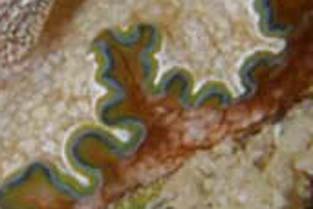 |
 |
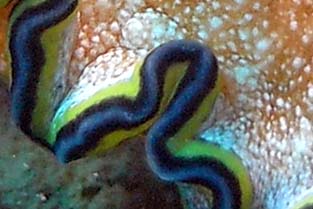 |
|
||
- At the edge of the mantle where there is distinct bluish outermost band as in Australian material but the black and yellow bands are less easy to define. They merge into a dirty yellow-brown (dull-kaki) comes darkest alongside the blue marginal band
- The foot as the same banding along the edge as the mantle but much fainter |
- At the edge of the mantle there is a bright yellow submarginal line and a black line of similar width at the edge. The extreme edge of the mantle is so thin that on microscopic examination there appears to be a fine translucent white line there |
- There are three lines at the edge of the mantle, the innermost bright yellow line, then a black line and right at the edge a translucent region as wide as the black and yellow lines which appear blue or greenish-blue
|
The rhinophore stalk is darker reddish-pink with white specks while the club has a blackish tip with a white line upper half the anterior midline and the upper two-thirds of the posterior midline.The lamellae are dark reddish-pink with a white serie of spots along the edge
The rhinophores sheaths are raised
The 23 to 28 gills are simple, the upper half of each edge is lined with black becomes a series of black spots in the lower half. The bottom quarter of each gill is reddish-pink with white specks and the rest is yellowish with white specks. There is often blackish tinge in the upper quarter
The mantle overlap is relatively wide and undulating with three major folds on each side and many secondary folds. Small specimen have only one major fold on each side midway between the gills and the rhinophores
When G. cincta is crawling, the gills make vibrating movements
The spawn is a white coiled ruban
It discharges a white fluid from the mantle when provoked
This seaslug is similar in colour and shape to Glosssodoris hikuerensis, but the three bands at the mantle border are smaller and different colours.
This seaslug is similar in colour and shape to Glosssodoris cf cincta , but G. cf cincta has a mantle border with bluish white (outer), then black, then whitish (inner) band
References :
Bill Rudman Sea slug site : Sea Slug Forum : Glossodoris cincta
Nudipixel Glossodoris cincta
Publications :
Berg, L.S.R. 1888. Malacologische Untersuchungen. In : C. Semper (ed.). Reisen im Archipel der Philippinen. Zweiter Theil. Wissenschafliche resultate 2(16, sect. 1) : 755-814, pls 77-81
Rudman, W.B. (1986) The Chromodorididae (Opisthobranchia: Mollusca) of the Indo-West Pacific: the genus Glossodoris Ehrenbergh (= Casella , H.& A. Adams). Zoological Journal of the Linnean Society, 86 : 101-184.
Yonow, N. (1994) Opisthobranchs from the Maldive Islands , including descriptions of seven new species (Mollusca: Gastropoda). Revue fr. Aquariol., 20(4) : 97-130.
Other photos of Glossodoris cincta :
Simon Deblock Reunion, Cap la Houssaye, 10 m, May 2018, size : 30 mm The Southwest Pacific form has a bluish white (outer), then black, then yellow (inner) bands on the mantle edge with an inner extra black line (a)
According Gary Cobb, it coud be another Glossodoris sp
|
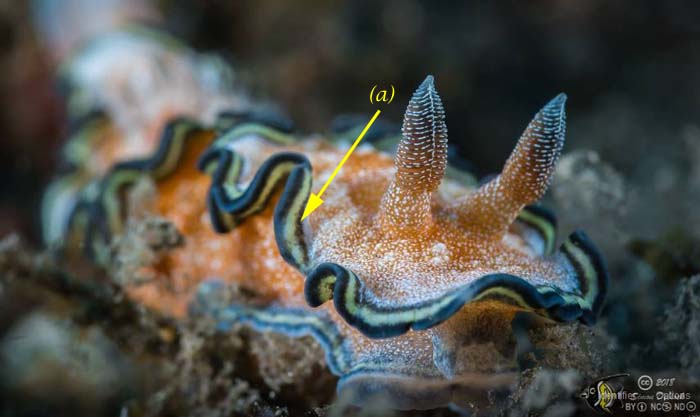 |
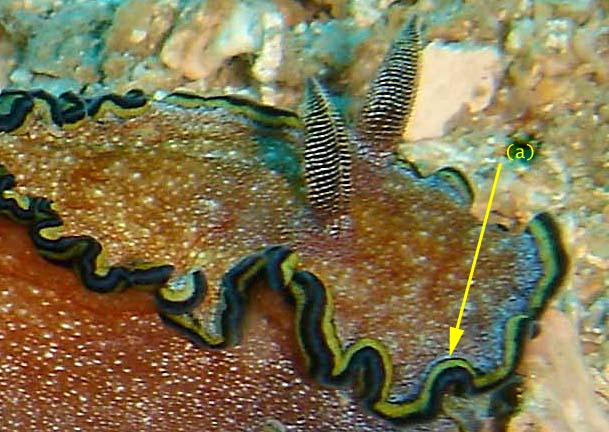 |
Alain-Benoît Rassat Madagascar, Nosy bé, Olaf, 20 m, 23 July 2013, size : 70 mm The Southwest Pacific form has a bluish white (outer), then black, then yellow (inner) bands on the mantle edge with an thin inner extra black line (a) |
Fabrice Schubert Mayotte, Musical plage, 3-4 m, 20 January 2011 A typical southwest Pacific form with a bluish white (outer), then black, then yellow (inner) bands on the mantle edge.
Strange for the South-west Indian Ocean area???? | 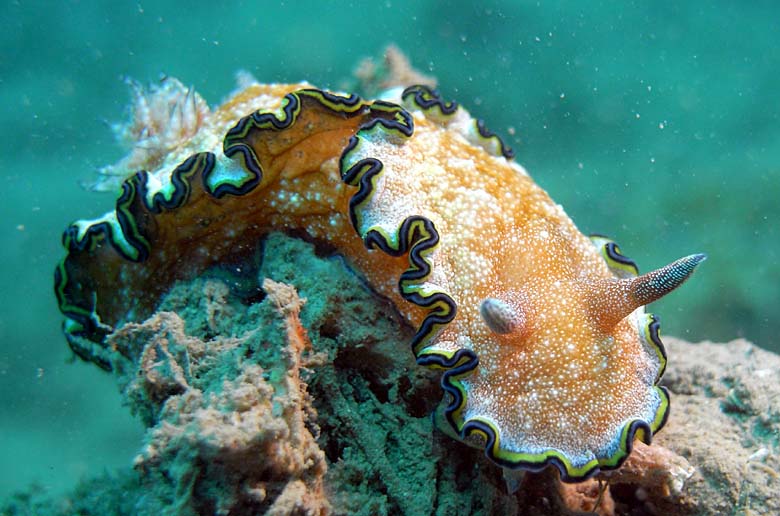 |
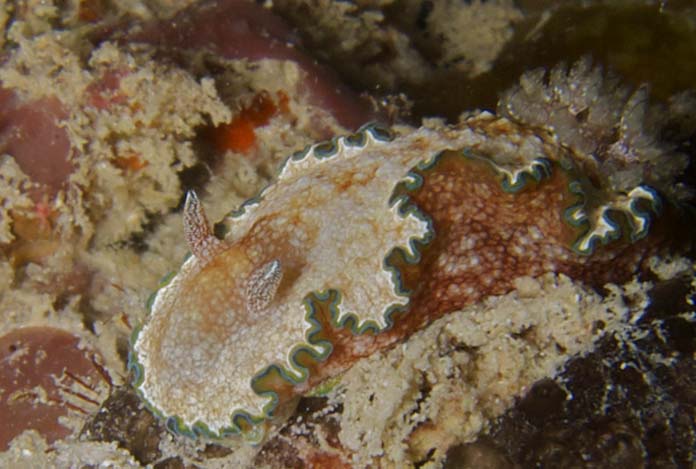 |
Christophe Mason-Parker Seychelles, Lilot, Mahé, 12 m, 31 August 2012
A typical Philippines - Indonesia colour form with a bluish outer band on the mantle edge and where the inner black and yellow lines tend to merge into a dull khaki band.
|
Matthias Deuss Mayotte, Récif barrière interne au nord de Koungou, 2 m, 30 December 2009, size : 40 mm
On the mantle, between the rhinophores, the white speckling is sparser in the midline making the central region somewhat darker.
|
 |
More photos from Indian Ocean
Madagascar, Glossodoris cincta southwest pacific colour form, at Nosy Bé, by Alain-Benoît Rassat